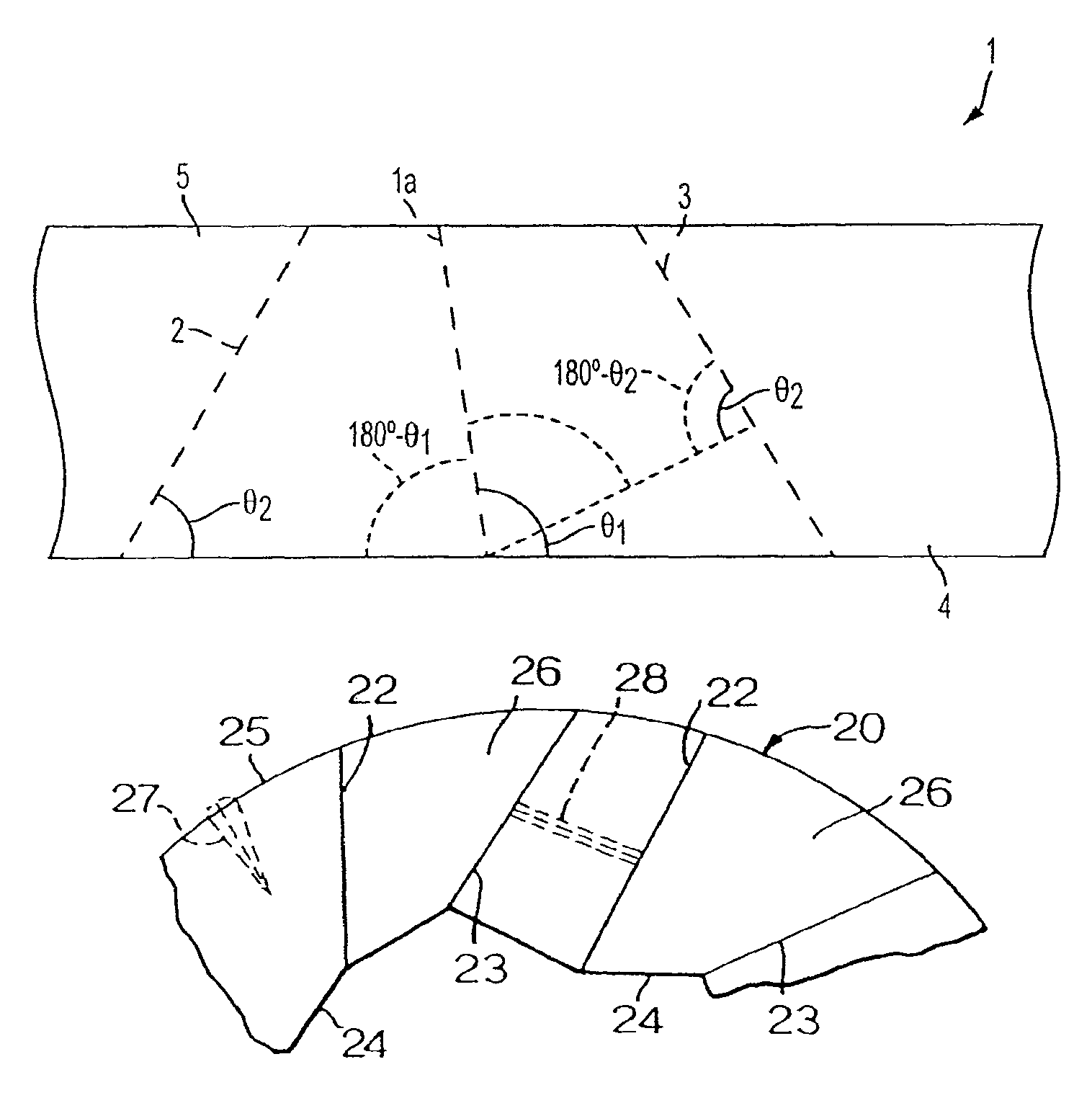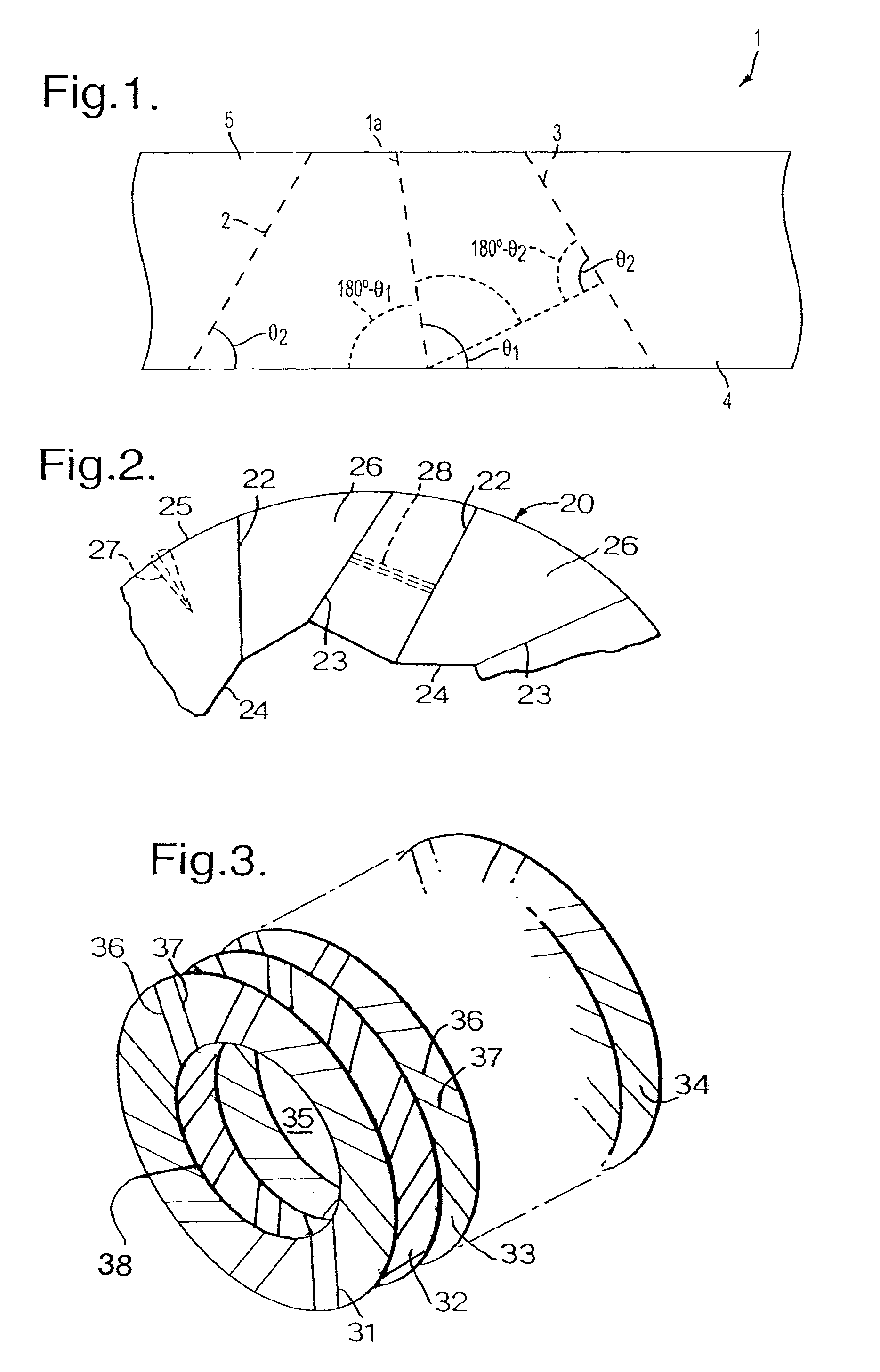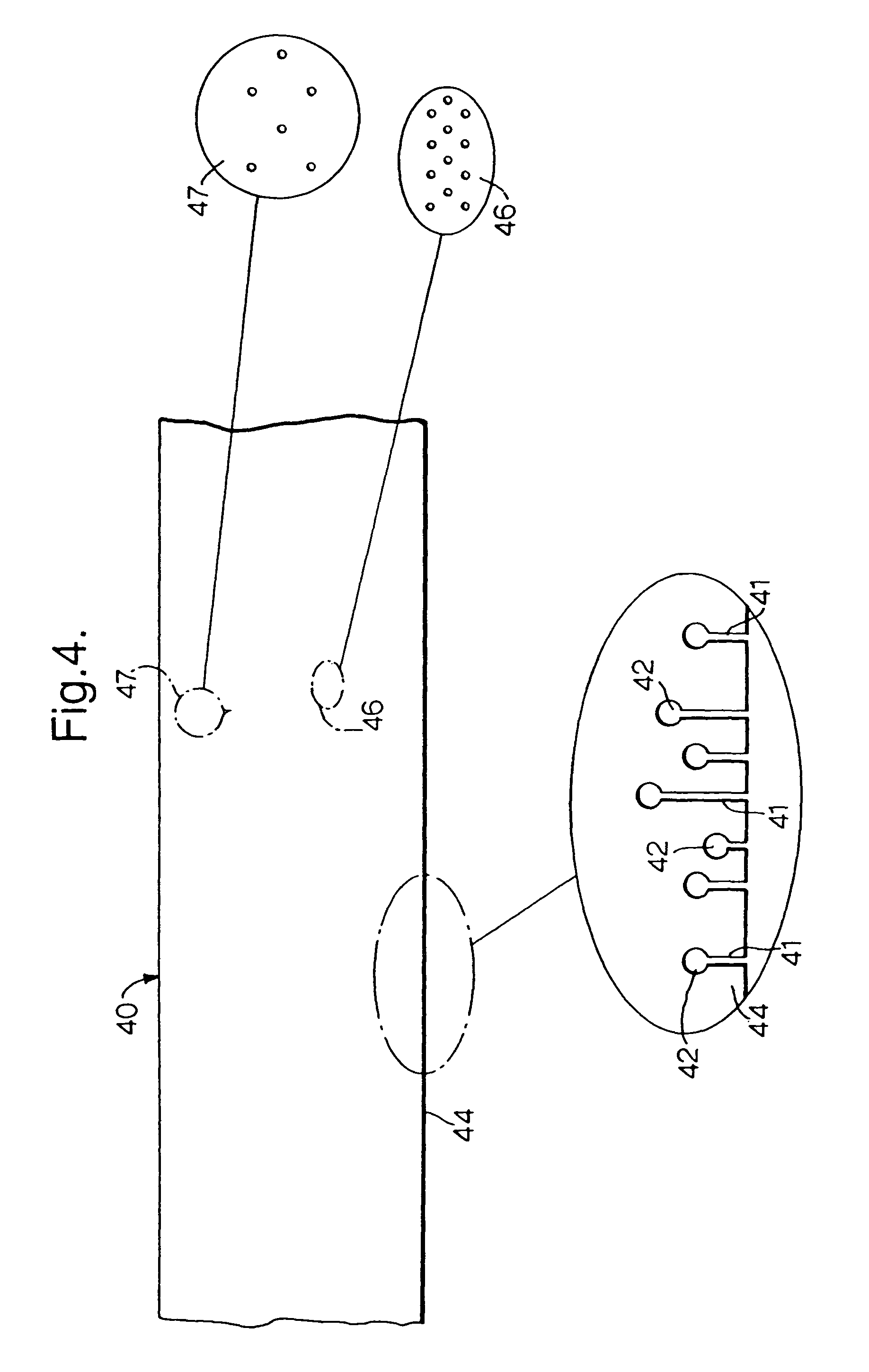Seals and a method of making seals
a technology of sealing and sealing plate, applied in the field of sealing plate, can solve the problems of reducing the acceptability of the sealing plate provided, affecting the operation of rotating components, and affecting the sealing effect, and achieve the effect of flexibleness
- Summary
- Abstract
- Description
- Claims
- Application Information
AI Technical Summary
Benefits of technology
Problems solved by technology
Method used
Image
Examples
Embodiment Construction
[0029]FIG. 1 illustrates a section of material 1 such as steel or a nickel alloy from which a seal in accordance with the present invention is formed. The length of material 1 is folded to create a set of forward folds 2 and a set of backward folds 1a, and 3 such that the creases formed about these folds 1a, 2, 3 create a ring or disc for location about or on a rotating shaft in use. It will be appreciated that the choice of angles Θ1. Θ2 for the folds 1a, 2, 3 and therefore the creases in the length of material 1 essentially determine the curvature of the ring formed.
[0030]Furthermore, the number of creases formed by folds 1a, 2, 3 will create greater iterative curvature in the material 1 and so closer proximity for an inner or sealing edge 4 to a desired curvature for consistency with that of a rotating component. In short, in side view the material 1 appears to be kinked about the folds 1a, 2, 3 into the desired ring formation to form a seal in accordance with the present inventi...
PUM
 Login to View More
Login to View More Abstract
Description
Claims
Application Information
 Login to View More
Login to View More - R&D
- Intellectual Property
- Life Sciences
- Materials
- Tech Scout
- Unparalleled Data Quality
- Higher Quality Content
- 60% Fewer Hallucinations
Browse by: Latest US Patents, China's latest patents, Technical Efficacy Thesaurus, Application Domain, Technology Topic, Popular Technical Reports.
© 2025 PatSnap. All rights reserved.Legal|Privacy policy|Modern Slavery Act Transparency Statement|Sitemap|About US| Contact US: help@patsnap.com



